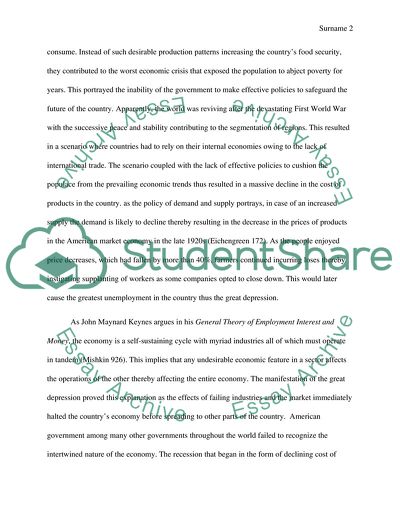Cite this document
(The Causes of the Great Depression in the 1920s Essay Example | Topics and Well Written Essays - 1500 words, n.d.)
The Causes of the Great Depression in the 1920s Essay Example | Topics and Well Written Essays - 1500 words. https://studentshare.org/history/1820332-1920s-research-essay
The Causes of the Great Depression in the 1920s Essay Example | Topics and Well Written Essays - 1500 words. https://studentshare.org/history/1820332-1920s-research-essay
(The Causes of the Great Depression in the 1920s Essay Example | Topics and Well Written Essays - 1500 Words)
The Causes of the Great Depression in the 1920s Essay Example | Topics and Well Written Essays - 1500 Words. https://studentshare.org/history/1820332-1920s-research-essay.
The Causes of the Great Depression in the 1920s Essay Example | Topics and Well Written Essays - 1500 Words. https://studentshare.org/history/1820332-1920s-research-essay.
“The Causes of the Great Depression in the 1920s Essay Example | Topics and Well Written Essays - 1500 Words”. https://studentshare.org/history/1820332-1920s-research-essay.


